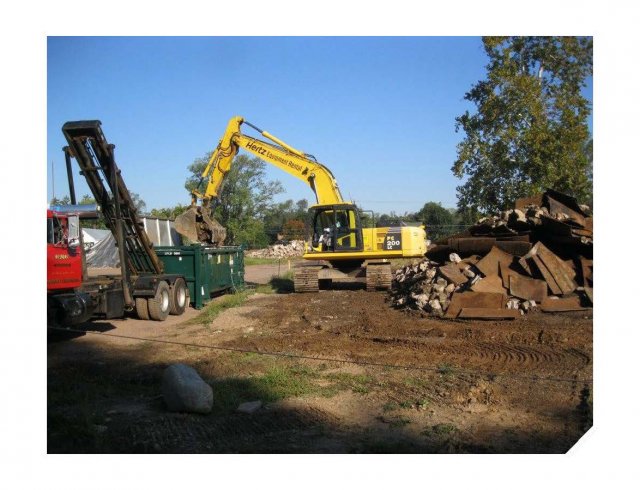Waste Management
EPA researchers develop methods for managing solid waste and contaminated water resulting from natural and human-made disasters, including waste minimization, treatment, storage and disposal. Researchers also develop tools and information to support waste management decisions.

Natural disasters are occurring with increasing frequency, generating volumes of waste and debris that are difficult for states, local governments, tribes and territories to manage. Waste management presents considerable challenges during any large-scale disaster; additional challenges exist during a wide-area chemical, biological, radiological, or nuclear (CBRN) incident.
Waste management challenges include:
- minimizing the amount of waste generated during cleanup
- segregating waste types
- waste treatment options
- temporary waste storage & staging
- packaging and transporting waste
- disposing of waste and debris
- treatment and disposal options for contaminated water
Throughout the incident response and clean up, waste must be characterized to reduce human exposure to contamination and to determine how and where to ship, treat and/or dispose of contaminated materials.
Response to a large-scale incident is complex because activities are interrelated. For example, decontamination approach decisions have an impact on the timeline of cleanup as well as on the cost and overall amount of waste generated. Decision-makers must be aware of the trade-offs involved in their decisions to optimize the response.
For CBRN incidents these complexities are compounded by:
- Lack of a federal regulations for managing biologically-contaminated waste
- Limited disposal capacity for radiologically contaminated waste
- Lack of experience of decision-makers and waste management facilities in handling these wastes
- Hesitancy from some disposal facilities to accept these wastes
Research Topics
- Solid Waste
- Water Treatment and Waste Management
- Materials and Waste Management Research (non-CBRN specific)
Available Tools
- Waste Estimation Support Tool (WEST): aids in estimating waste generated from remediation and cleanup activities following a radiological or biological incident.
- Incident Waste Assessment & Tonnage Estimator (I-WASTE): provides information for planning how to handle, transport, treat, and dispose of contaminated waste and debris. Includes a waste volume calculator.
- Municipal Solid Waste Decision Support Tool (MSW DST): can be used to identify and evaluate cost and environmental aspects associated with specific waste management strategies or existing systems.
- Decision Support Tools for Incident Response & Waste Management: access a page with a suite of EPA tools to support many response-related tasks. Use the filters to quickly find tools that are specific to hazards and/or response activities/phases.
Other Resources
- Video: Incident Waste Assessment & Tonnage Estimator (I-WASTE)
- Managing Materials and Wastes for Homeland Security Incidents
- Sustainable Materials Management Tools
Featured Science Matters Stories
EPA Tools Help Local Decision-Makers Deal with Waste Resulting from Major Natural Disasters
